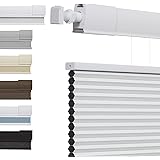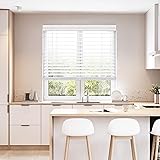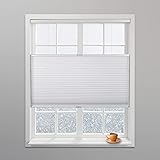Thinking about a kitchen refresh can feel daunting. Dreams of a new space often clash with budget realities. Many homeowners face this exact dilemma.
However, a DIY kitchen remodel on a budget is entirely achievable. This approach saves significant costs. It also offers immense satisfaction.
The video above kicks off an exciting new series. It details a real-world DIY kitchen demolition. Follow along as the homeowner tackles his own kitchen transformation.
Embarking on Your DIY Kitchen Demolition Journey
Every great kitchen remodel begins with a clear vision. First, assess your current kitchen layout. Identify elements that no longer serve you.
The video’s kitchen, for example, featured outdated cabinets. A tiny refrigerator also presented a functional challenge. Old flooring and an awkward hood were also slated for removal.
Documenting this “before” stage is crucial. It provides a visual reference. This helps in tracking your progress.
Setting a Vision: Industrial Chic on a Budget
The homeowner aims for an “industrial look.” This aesthetic combines raw and refined elements. It creates a modern, edgy feel.
Key features of this style include exposed shelving. Stainless steel appliances also fit perfectly. Concrete countertops add a rugged touch. Furthermore, a gray slate tile floor complements the design.
Achieving this on a budget requires smart material choices. Opt for reclaimed materials where possible. Source affordable alternatives for high-cost items.
Essential Steps Before Demolition Day
Proper preparation ensures a smooth demolition. Safety and planning are paramount. These steps prevent unexpected issues.
Safety First: Power and Planning
Electrical safety is non-negotiable. Always identify and shut off power to the kitchen. The homeowner initially struggled finding the right breaker. Consequently, he turned off the main house power. This is a safe, albeit less convenient, solution.
Labeling breaker switches helps future work. Use a circuit tester to confirm power is off. Wear appropriate personal protective equipment (PPE). This includes gloves, eye protection, and a dust mask. Clear the work area of any obstacles.
Tools and Techniques for Efficient Cabinet Removal
Demolishing cabinets requires specific tools. A pry bar, hammer, and drill are essential. Begin by removing cabinet doors. This significantly reduces weight.
Empty all cabinets beforehand. This step prevents clutter and potential damage. Then, unscrew cabinets from walls and adjacent units. If too heavy, break larger sections apart. The homeowner did this effectively when working alone. He removed doors to lighten the load. This made the top cabinet manageable.
Tackling Unexpected Challenges During Demolition
DIY projects rarely go exactly as planned. Be ready for unforeseen complications. Flexibility is a valuable trait.
The video showed a power box “sandwiched” behind a cabinet. This necessitated a second power shutdown. Such discoveries are common during older home remodels. Old wiring or hidden pipes can appear.
Address each issue methodically. Take breaks if frustration builds. The homeowner’s “cocktail break” highlights this need. A fresh perspective often helps problem-solving. Always prioritize safety above speed.
Beyond Demolition: Envisioning Your New Kitchen Layout
Demolition is just the first phase. Next, comes the exciting redesign. Consider appliance relocation. The video details moving the refrigerator. This creates new counter and cabinet space.
Think about workflow and functionality. Where will your cooking prep happen? How will traffic flow through the kitchen? A well-planned layout enhances daily living.
Upgrading Key Features: Sink, Countertops, and Flooring
Specific feature upgrades define the kitchen’s character. A farm sink offers a rustic yet elegant touch. These sinks are deep and functional. They often become a kitchen focal point.
Concrete countertops provide a unique look. They can be poured in place or fabricated. This option allows for custom shapes. Proper sealing is vital for durability and stain resistance. They align perfectly with an industrial aesthetic.
Gray slate tile flooring offers durability. It is also aesthetically pleasing. Slate is known for its natural texture. It holds up well in high-traffic areas. This choice completes the industrial vibe.
Why a DIY Kitchen Remodel on a Budget?
Undertaking a DIY kitchen remodel offers many benefits. Significant cost savings are a primary driver. Labor costs often comprise a large portion of renovation expenses. Doing the work yourself eliminates these.
Furthermore, it is a fantastic learning opportunity. You acquire new skills. Problem-solving abilities sharpen with each task. The sense of accomplishment is profound. You create a personalized space. This perfectly reflects your style and needs.
The homeowner demonstrates that expertise isn’t always required. A willingness to learn goes a long way. Even with “zero, maybe five percent experience,” a successful outcome is possible. This budget-friendly approach empowers anyone to try. You control the process and the cost.
Embarking on a DIY kitchen demolition is the first exciting step. This initial work clears the slate. It prepares your space for its future transformation. Follow along with the rest of this kitchen remodel on a budget series. You will gain valuable insights for your own home improvement journey.











